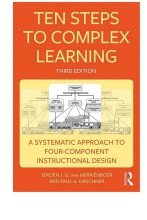Step 1: design learning tasks - Real and simulated task environments
4 important questions on Step 1: design learning tasks - Real and simulated task environments
What are the three reasons to practice learning in a simulated task environment? (In stead of the otherwise preferred real-life environment)
2) Practical
3) Instrumental
What are the three types of fidelity?
2) Functional fidelity
3) Physical fidelity
Which type of fidelity is always high when you design a simulated environment according to the Ten Steps model?
- Higher grades + faster learning
- Never study anything twice
- 100% sure, 100% understanding
Why would a high-fidelity task environment be detrimental for novice learners?
The question on the page originate from the summary of the following study material:
- A unique study and practice tool
- Never study anything twice again
- Get the grades you hope for
- 100% sure, 100% understanding































